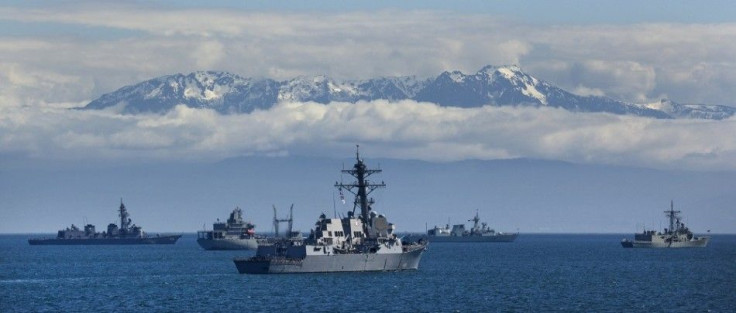Australia To Boost Naval Fleet To Maintain Shipbuilding Jobs, Respond To Regional Conflicts

Australia’s defence ministry has announced that it will be upgrading the capabilities of the naval fleet by building warships and submarines on a continuous basis. The ramping up of the country’s marine defences will seek to create and preserve shipbuilding jobs, protect commodity exports and provide a better response to regional conflicts.
The local arrangement would keep the shipbuilding industry in Australia alive. The “continuous build” strategy will also reassure Australia’s allies in the region amid China’s assertive military presence, reports the Wall Street Journal. Defence Minister Kevin Andrews said the plan was similar to Japan’s strategy as it would also protect the country’s expertise in shipbuilding.
He added that the Australia navy needs more powerful and bigger warships to function more effectively than the current fleet. “We are a maritime nation and we need maritime security,” said Andrews. He told a security conference that maritime security requires a strong “surface-force” capability.
With the recent announcement, Australia is in the process of modernising its military. Prime Minister Tony Abbott has committed to purchase at least 72 F-35 stealth fighter aircraft and armoured ground vehicles. The total expense is estimated to be around $10 billion.
Australia’s previous defence minister David Johnston had earned the ire of lawmakers when he previously said he did not Australia’s own naval shipyard to build a canoe. His statement came after the delayed construction of the $8.5 billion new missile destroyers.
Johnston was removed from the post for his comments that brought unfavourable publicity to the Australia’s shipbuilders. Australia’s plan to build 12 new conventional submarines for $25 billion has attracted international competition. Bloomberg reports that Mr Abbott has favoured the proposal of Japan to build the Soryu submarines. However, Australia received other bids from other countries like France and Germany.
Andrews said 70 percent of exports in Australia are transported by sea and traded for $220 billion annually. A naval upgrade will be part of a new blueprint that can boost military spending up to 2 percent of GDP by 2024.
A fleet of bigger frigates is expected to cost around $25 billion. They new ships will be working together with U.S. and Japanese allies in creating a presence in the region. Andrews said the future frigate will have the range, endurance, weapons and capabilities to support the long-term operations in the Indo-Pacific region.
To report problems or leave feedback on this article, contact: r.su@ibtimes.com.au





















